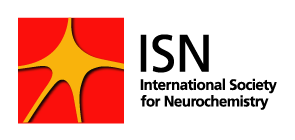A closer look on neuroscience in: Nigeria
Everyone knows the “I” in ISN stands for “International”, and we try to put this in focus whenever we can. It is reflected in the way how ISN picks locations for our biannual meetings, as well as in the diverse geographic origins of members of ISN council and committees. Take the YSSC, for example: 6 people, 6 time-zones, 5 countries, 4 continents. That’s all good. But we want more. Therefore, we will dedicate this What’s on to a continent with lots of young, engaged and talented scientists who are not necessarily in the centre of scientific attention: Africa, and as a representative for this huge continent: Nigeria.
Dr. Lekpa David, from the University of Port Harcourt in Nigeria, not only helped us get insights by taking part in a YSSC interview himself, but took a survey among undergraduates from his university and interviewed 12 of his colleges from different career stages. Huge thank you for that again, Lekpa, great work!
This newsletter is just a summary, so be prepared for more information along this line! First of all, the topic that connects all of us: neuroscience! At the University of Port Harcourt, Neuroscience is part of the Department of Anatomy, and there is one neuroscience course for third year medical undergraduates. Among the four years of undergrad, only around 33% of the students indicated interest, which seems quite low. The graduates taking part in the survey and interviews revealed the large workload in other courses as well as lack of equipment, mentorship and funding as reasons for this low percentage.
Interestingly, different career stages had slightly different impressions. Young investigators and graduates considered the field of neuroscience as very important, whereas undergraduates put the importance on a low level, as this is a small part of their curriculum, and there are very few options to get training. Nonetheless, there are strong moves to increase teaching and advocacy for neuroscience currently put in place by Lekpa, and since 2012, by Prof. Amadi Ihunwo. All interviewees, no matter at which stage, made it clear that neuroscience is currently at its start point, but has an enormous potential just waiting to flourish. This is based on the work spirit among the small group of neuroscientists in Port Harcourt and the number of motivated and interested young graduates full of hope for groundbreaking research.
The answers to our question “what are your hopes for neuroscience in Africa?” reflected exactly that potential amongst all career stages: Develop it as a more independent discipline and play a global role in making discoveries to solve national and international problems and cure diseases. Despite all circumstances, this is a hope that connects us all.
But what is missing for neuroscience in Nigeria to develop as much as it could? The main obstacles mentioned by all participants were the lack of infrastructure. This spans from funding to lab facilities and work space from reagents to standardization of methods. All this reflects in the low number of training opportunities for staff and students.
We asked what societies could do to improve the situation of young scientists in Africa. The answers were clear and go along the line of things that ISN has already implemented: provide funding and training options, from workshops (e.g. ISN and IBRO schools) to fellowships, as well as access to collaborations and networking with other research groups. Also, encouragement of local universities to invest more in neuroscience came up, which would again push training and teaching forward.
Of course there is one question that cannot be forgotten. It has been asked in most likely every job interview all around the world and also on every family get together. With Christmas coming up we can all start thinking about how we going to answer it this year. Where do you see yourself (as a neuroscientist) in 5 years? The YSSC believes that the answers given to this question are the most promising, and probably most important point for the future of neuroscience in Africa. Most of the people want to stay in Nigeria or at least in Africa and pursue a career in science, mentor junior scientists and contribute important discoveries as independent, self-funded researchers. Even if many of the young investigators and PhD students are keen on learning more techniques in labs abroad, improving local conditions and using this knowledge to offer African neuroscience what it needs to kickstart seems essential.
What we, as the YSSC, learned from this interview is that there is much more to neuroscience in Africa then one might generally think. Of course writing about it and making interviews at one university does not show the entire situation or solve the problems. But it gives a glimpse at the potential and the motivation hidden in the circumstances we see from the outside and we cheer the impressive efforts made by those engaged young scientists.
Your YSSC
